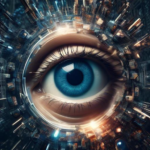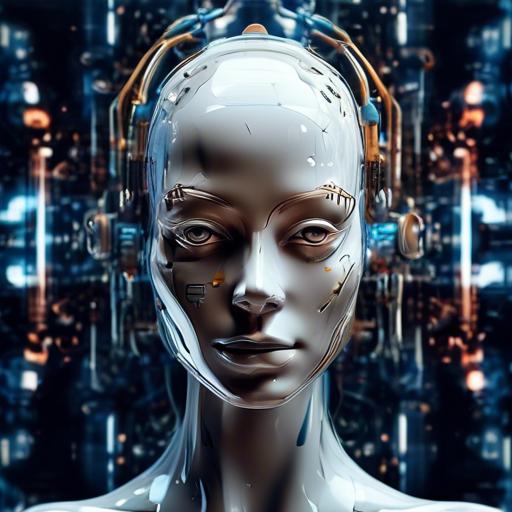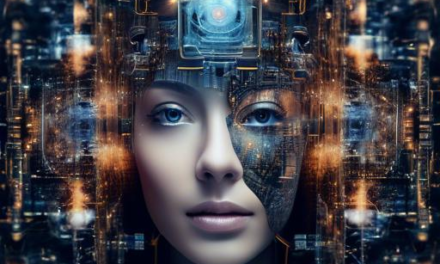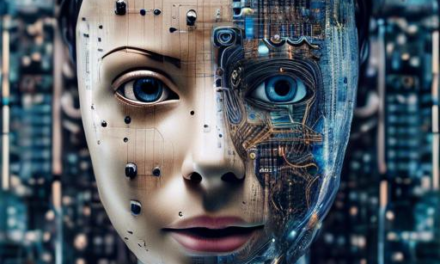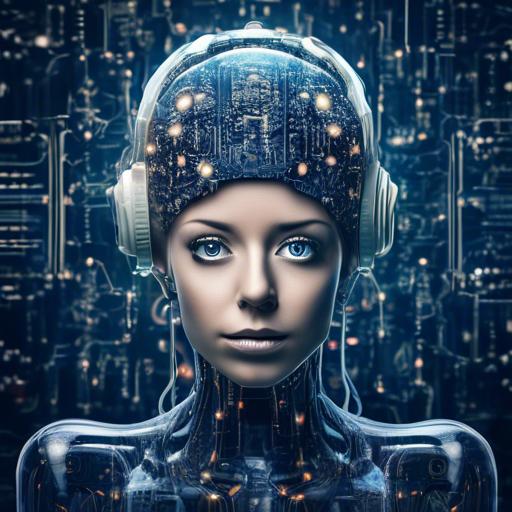In a world where art and technology are interwoven like threads in a vibrant tapestry, a new revolution is quietly unfolding—one pixel at a time. The brush? Artificial Intelligence. The canvas? The boundless creative potential of the human spirit. Imagine a realm where the power to conjure stunning visuals is not confined to the hands of seasoned artists or well-funded studios, but accessible to anyone with a spark of imagination. This is the dawn of AI democratizing image creation, where algorithms serve as both muse and collaborator, transforming dreams into digital masterpieces. Welcome to the era where creativity knows no bounds and every individual can paint their own vision with the click of a button. Let’s embark on this fascinating journey to explore how AI is making this extraordinary future our present reality.
Table of Contents
- From Exclusive to Inclusive: Breaking Down Barriers in Art
- Empowering Novices: Simple Tools, Stunning Results
- Fostering Creativity: AI as Your Collaborative Partner
- Cost-Effective Creations: Professional Quality without the Price Tag
- Accessibility for All: Streamlining the Learning Curve
- Ethical Considerations: Balancing Innovation with Responsibility
- Expanding Horizons: New Possibilities for Visual Storytelling
- Tailoring AI Tools: Customizing for Personal Vision
- Community and Collaboration: Building Networks Through Shared Art
- Closing Remarks
From Exclusive to Inclusive: Breaking Down Barriers in Art
Artificial Intelligence is reshaping the art world, tearing down age-old barriers that once restricted the production and appreciation of creative works. Gone are the days when only the elite could commission or create stunning imagery. AI-driven tools are allowing everyone, from seasoned artists to novices, to tap into vast wells of creativity.
What used to require years of technical skill can now be done with a few clicks. Anyone with a computer and some imagination can harness AI to produce professional-level artwork. These tools are inclusive and approachable, removing financial and technical constraints that traditionally kept many from participating in the creative process.
- Accessibility: AI tools are often free or low-cost, making them accessible to those with limited resources.
- Diversity of Expression: AI can interpret and render countless styles, from classic to avant-garde, catering to diverse artistic tastes.
- Ease of Use: User-friendly interfaces and tutorials make it easy for anyone to get started, regardless of their expertise.
Moreover, AI-driven collaborations open new horizons where human creativity meets machine precision. Talented artists can quickly prototype ideas, allowing more time for refining and conceptualizing main pieces. The fusion of AI with human touch is creating hybrid forms of art previously unimaginable.
| Traditional Art Creation | AI-Powered Art Creation |
|---|---|
| Requires years of practice | Accessible with minimal training |
| Resource-intensive | Often free or low-cost |
| Time-consuming | Quick production cycles |
By leveling the playing field, AI democratizes image creation in a way that promises to forever alter the artistic landscape. We’re entering a new era of art: one marked not by exclusivity and elitism, but by inclusiveness and boundless creativity.
The future of art isn’t controlled by gatekeepers; instead, it’s being collectively shaped by communities empowered by technology. AI enables everyone to share their perspectives, breaking down barriers and making art a universally shared human experience.
Empowering Novices: Simple Tools, Stunning Results
The advent of AI-driven tools has opened up a world of possibilities for beginners in image creation. No longer the domain of skilled artists or professional designers, these tools are leveling the playing field, making artistry accessible to anyone with a creative spark and a computer.
What’s fascinating is the way these tools incorporate intuitive design, making complex tasks feel like child’s play. **Drag-and-drop interfaces, a vast library of templates, and AI-powered suggestions** mean that even someone with no prior experience can produce breathtaking visuals. Imagine being able to transform a simple sketch into a fully-realized digital masterpiece with just a few clicks!
- **Easy to Use:** No need for extensive learning curves or technical jargon.
- **Time-Saving:** Quickly generate high-quality images without hours of labor.
- **Cost-Efficient:** Many of these tools are free or available at a fraction of the cost of traditional software.
For those still skeptical of AI’s capabilities, a simple comparison can showcase its impact:
| Traditional Methods | AI-Driven Tools |
|---|---|
| Requires extensive training | Beginner-friendly |
| High cost of professional software | Affordable or free solutions |
| Time-consuming processes | Rapid image generation |
This shift not only empowers novices but also sparks innovation across various fields. Educators can create engaging learning materials, small businesses can whip up professional marketing content, and hobbyists can bring their personal projects to life—all without the stumbling blocks that traditionally stifled non-professional creators. The future of image creation is not just in the hands of the few but is a canvas opened wide for all to paint upon.
Fostering Creativity: AI as Your Collaborative Partner
Imagine wielding the power to bring your wildest artistic visions to life without needing a degree in fine arts or an expensive paint set. Thanks to advances in Artificial Intelligence, this scenario is no longer confined to the realms of imagination. AI has stepped in as an inventive co-creator, acting as an enabler and democratizing the image creation process. Artists, designers, and even everyday individuals can now experiment with various styles, concepts, and techniques with unprecedented ease.
AI tools are transforming how we approach creativity by offering a range of possibilities:
- AI Art Generators: Platforms like DeepArt and DALL-E empower users to create stunning visuals from text prompts or a simple sketch.
- Style Transfer: With a few clicks, tools like Prisma can transform a mundane photo into a masterpiece that echoes the styles of famous artists like Van Gogh or Picasso.
- Generative Adversarial Networks (GANs): These algorithms can produce entirely new images based on existing data, opening doors to endless creative potential.
By serving as a collaborative partner, AI doesn’t just automate tedious tasks but also inspires new ideas. For instance, fashion designers can test out multiple fabric patterns and color palettes without wasting material. **Graphic designers** can generate a variety of logo designs in minutes, freeing up time for other creative aspects of a project. The synergy between human intuition and AI’s computational power leads to richer, more diverse outcomes.
In fields like advertising and marketing, AI-generated imagery is making waves by providing on-the-fly adjustments to meet brand aesthetics. This agility in image creation is crucial for campaigns that require rapid turnaround times. Let’s not overlook educational sectors where students, irrespective of their geographical or financial limitations, can access sophisticated tools for art projects, thus fostering creativity from an early age.
Cost-Effective Creations: Professional Quality without the Price Tag
Creating professional-quality images has traditionally been a privilege reserved for those with hefty budgets and specialized skills. However, with the advent of AI-driven tools, this landscape is rapidly transforming. These technologies are making it possible for individuals and small businesses to produce stunning visuals without draining their financial resources.
AI-powered platforms are adept at handling a multitude of tasks that were once the domain of seasoned designers. Among these are:
- **Image enhancement:** Automatically adjust color balance, contrast, and sharpness.
- **Content generation:** Create unique images based on user specifications or inspirations.
- **Editing tools:** Apply filters, crop, and retouch images with intuitive interfaces.
Besides just offering versatile tools, many AI image creation platforms feature user-friendly interfaces that democratize design. Even if you lack a background in graphic design, these platforms are designed to be accessible. Tutorials, pre-made templates, and smart suggestions further lower the entry barrier, ensuring that anyone can achieve a professional look.
Below is a comparison of traditional methods versus AI-powered solutions:
| Aspect | Traditional Methods | AI-Powered Solutions |
|---|---|---|
| **Cost** | High due to software licenses & professional fees | Low or free, subscription-based models |
| **Skill Requirement** | Expert level | User-friendly for all levels |
| **Time Investment** | Significant due to manual effort | Minimal with automated features |
The cost-effectiveness of AI solutions extends beyond immediate savings. It also frees up time, allowing creators to focus on other critical aspects of their projects, like content strategy and audience engagement. This innovation is not just a financial relief but a holistic empowerment.
Accessibility for All: Streamlining the Learning Curve
AI is revolutionizing the realm of digital art, making it accessible to individuals across various skill levels. This democratization isn’t merely about convenience; it’s crafting a space where creativity knows no bounds.
Traditionally, mastering image creation required significant time investment in learning complex software. However, modern AI tools empower even novices to produce high-quality images with minimal effort. These tools offer:
- Intuitive interfaces that are easy to navigate even for beginners
- Automated adjustments that refine images with a single click
- Pre-made templates that streamline the creative process
Consider the following comparison of traditional vs. AI-powered image creation:
| Aspect | Traditional Methods | AI-Powered Tools |
|---|---|---|
| Learning Curve | Steep & Time-consuming | Shallow & User-Friendly |
| Time Investment | Months to Years | Minutes to Hours |
| Cost | High (software licenses) | Low to Moderate (affordable subscriptions) |
AI tools aren’t just simplifying the process — they’re making it inclusive. Features like voice commands and **adaptive interfaces** cater to users with disabilities, ensuring a broader section of society can engage in digital art. Additionally, these tools support multiple languages, breaking down barriers and making image creation a global endeavor.
Ultimately, the application of AI in image creation is a pivotal step towards inclusivity. By lowering barriers and expanding accessibility, AI is championing a creative revolution where everyone, irrespective of their background or abilities, can participate and thrive.
Ethical Considerations: Balancing Innovation with Responsibility
In the rapidly evolving landscape of artificial intelligence, the power to create and manipulate images has become universally accessible. While this opens up remarkable opportunities for artists, educators, and hobbyists, it also brings forth the need for conscientious use, ensuring that innovation doesn’t outpace our ethical responsibilities.
Transparency: When creating images with AI, it is essential for creators to disclose when and how AI has been used. This transparency fortifies trust and authenticity—key pillars in an era where the line between human and machine-generated content is increasingly blurred.
- Credits: Clearly credit AI tools used in the creation process.
- Context: Provide context to prevent misunderstandings or misinformation.
Intellectual Property: AI democratization in image creation raises questions about intellectual property rights. Developers and users must collaborate on frameworks that protect original content creators while fostering innovation. Solutions could include leveraging blockchain for verifiable ownership records.
| Ethical Aspect | Consideration |
|---|---|
| Transparency | Disclose AI usage |
| Intellectual Property | Protect original creators |
Bias and Fairness: AI systems can sometimes perpetuate biases present in training data. It’s pivotal to focus on creating and using AI that promotes diversity and inclusivity. This includes diversified training datasets and regular audits to monitor and mitigate inherent biases.
- Train inclusively: Use diverse datasets.
- Regular audits: Periodically check for biases.
Environmental Impact: The computational power required for AI can be substantial, contributing to environmental concerns. Innovators should aim for sustainability by optimizing algorithms for efficiency and exploring green energy sources to power data centers.
Expanding Horizons: New Possibilities for Visual Storytelling
Visual storytelling has reached a new frontier with the advent of AI-powered image creation tools. By harnessing the power of machine learning algorithms, these tools have opened the doors for artists, storytellers, and even everyday users to produce stunning visuals that were once constrained by skill level and technical knowledge. **AI democratizes the creative process**, fundamentally reshaping the landscape of visual arts.
Consider the new creators entering the scene: young students, hobbyists, and non-designers. AI empowers them with the ability to turn abstract ideas into tangible visuals without needing years of training. This transformation means that any individual with a vision can **bring their stories to life**. Imagine a teacher using AI to generate custom illustrations for a classroom story, or a small business owner designing unique branding without hiring a professional designer. The possibilities are vast and varied.
| Feature | Before AI | With AI |
|---|---|---|
| Skill Level Needed | High | Basic |
| Time Required | Months/Years | Hours/Days |
| Cost | Expensive | Affordable/Free |
With tools like text-to-image generation systems, users can simply input descriptive text prompts, and the AI renders an image that matches the description. This capability **bridges the gap between imagination and realization**, ensuring that your vision isn’t lost in translation. Coupled with evolving technologies in virtual and augmented reality, the realms of storytelling are no longer tied to traditional media but expanded into interactive and immersive experiences.
- Enhanced creativity: AI removes technical barriers, fostering innovation.
- Inclusion: More people can participate, making the creative community more diverse.
- Efficiency: Faster creation processes allow for rapid storytelling iterations.
The implications are clear: AI isn’t just a tool, it’s a revolution in how we approach visual content. As more creators adopt these advanced technologies, we will continue to see richer, more diverse stories being told, amplifying voices that may have previously lacked a platform. The world of visual storytelling is expanding, and the horizon is teeming with new possibilities.
Tailoring AI Tools: Customizing for Personal Vision
Artificial intelligence has brought a revolution in various fields, and one area where it truly shines is in the customization of image creation tools. By leveraging the power of AI, artists, designers, and hobbyists can now craft visuals that are not only stunning but also deeply personal and aligned with their unique vision. This transformative capacity empowers everyone from established professionals to budding creatives, ensuring no vision is too niche or too grand.
- Adaptive Creativity: AI tools adjust to your style, learning from your preferences and evolving with you.
- Infinite Possibilities: The blend of AI with human creativity births new genres of art and design that were previously unimaginable.
- User-Friendly Interfaces: Intuitive designs mean that even those without technical expertise can dive into creating breathtaking images.
Imagine a scenario where you could describe a scene or a concept, and the AI generates it based on your inputs. These tools are becoming increasingly sophisticated, allowing you to tweak colors, textures, and forms with incredible precision. Particularly, the growth of machine learning algorithms enables the creation of highly personalized images that reflect the creator’s individual style and vision.
| Feature | Benefit |
|---|---|
| Style Adaptation | Mimics user’s unique artistic approach |
| Real-Time Edits | Instantly reflects modifications and preferences |
| Collaborative Platforms | Fosters creative partnerships remotely and seamlessly |
These advancements mean democratization of design tools, putting powerful capabilities into the hands of many rather than a privileged few. Small business owners can now produce high-quality visual content without the need for expensive software. Educators can harness these tools to provide students with robust creative experiences without demanding technical expertise.
In essence, the fusion of AI with image creation tools is not just about enhancing efficiency but about expanding horizons. Each customized tool becomes a partner, adjusting to the user’s needs and aspirations, thus transforming the very fabric of visual storytelling. With every step towards increased personalization, AI makes creative expression more accessible and deeply meaningful for all.
Community and Collaboration: Building Networks Through Shared Art
In our digital age, the mingling of technology and artistry has led to revolutionary shifts in how we perceive and create visual art. AI tools have become powerful allies for artists, allowing for the creation of vivid images and complex designs that push the boundaries of imagination. This transformative ability has fostered a novel environment where community and collaboration thrive through shared artistic endeavors.
Shared Platforms and Tools
The proliferation of AI-powered image creation platforms encourages collective creativity. Artists no longer need to work in isolation; they can now collaborate in real-time on platforms that offer an extensive array of AI-assisted features. These tools include:
- Interactive Drawing Boards: Real-time sketching and brainstorming sessions with AI-generated suggestions.
- Artistic Style Transfer: Tools that apply the aesthetic style of one image to another, allowing artists to blend their works seamlessly.
- Shared Image Repositories: Databases where artists can upload, modify, and share AI-generated images.
Building Inclusive Artistic Networks
AI democratizes image creation by making high-tech tools more accessible to a broader audience. This inclusivity allows artists from various backgrounds and skill levels to participate in collective projects. Communities are emerging around these shared tools, fostering networks that might have been unimaginable a decade ago. Through these networks, artists can:
- Share **feedback** and learn new **techniques**.
- Collaborate on **large-scale projects**.
- Host **virtual art exhibitions** to showcase their collaborative creations.
Bridging Gaps with AI
One of the most striking impacts of AI in art is its ability to bridge geographical and social gaps. Virtual spaces curated by AI tools offer a platform for artists from disparate parts of the world to connect and work together. Here’s a snapshot of how AI tools are making this possible:
| Tool | Function |
|---|---|
| AI-enhanced Video Calls | Enabling real-time collaboration with visual aids and suggestions. |
| Global Art Forums | Creating repositories of discussion and tutorials accessible to everyone. |
| Virtual Reality (VR) Galleries | Allowing artists to showcase their work in immersive environments. |
By harnessing the power of AI, we’re not just creating art; we’re creating communities. These innovative tools tear down the usual barriers of time, space, and resources, urging a collaborative spirit that is both enlightening and empowering. With AI’s support, the global art community is blooming, inviting everyone to partake in this inclusive, creative journey.
Closing Remarks
As we continue to witness the transformative power of AI in democratizing image creation, let us embrace the endless possibilities that lie ahead. From artists and designers to entrepreneurs and educators, AI is breaking down barriers and empowering individuals from all walks of life to unleash their creativity and bring their visions to life like never before. Let us seize this moment to celebrate the inclusive nature of AI and champion a future where everyone has the tools and opportunities to express themselves through the art of image creation. Together, let us embark on this exciting journey towards a more diverse, innovative, and interconnected creative landscape. The future is bright, and it is ours for the taking. Let’s create, inspire, and shape the world with the help of AI.




